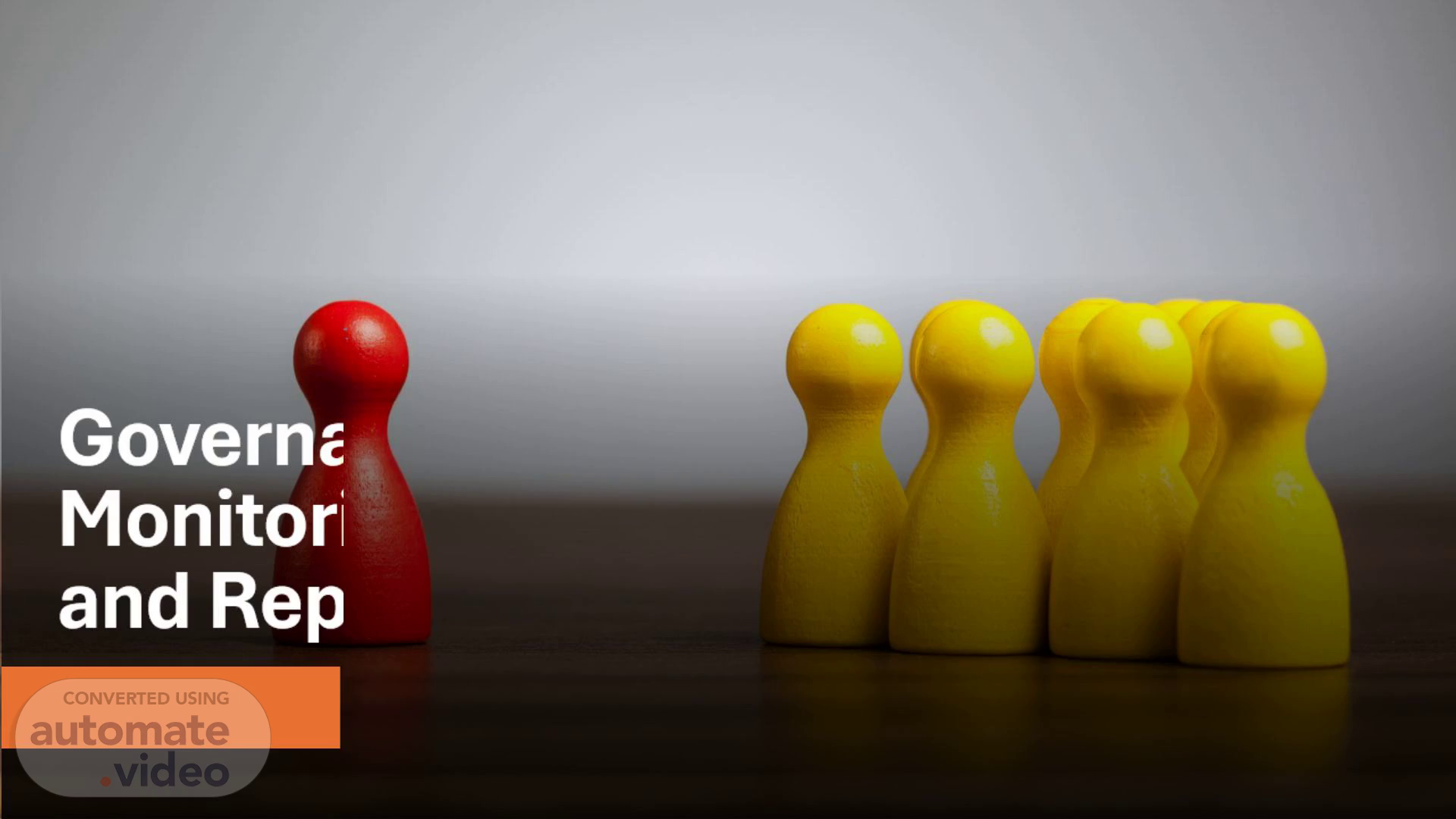
Governance in Risk Monitoring, Communication and Reporting
Scene 1 (0s)
A group of yellow figures and a red figure on the other side.
Scene 2 (10s)
The governing body Protects the Company. Board Oversight The role of the board of directors in providing guidance, monitoring, and challenging management's decisions related to risk appetite and overall risk management. Effective board oversight ensures alignment with stakeholder interests and long-term value..
Scene 3 (26s)
[image] VALUES. Tone set at the top. The governing body should appreciate that strategy, risk, performance, compliance and sustainability are inseparable.
Scene 4 (53s)
The governing body Protects the Company. Board Oversight The role of the board of directors in providing guidance, monitoring, and challenging management's decisions related to risk appetite and overall risk management. Effective board oversight ensures alignment with stakeholder interests and long-term value..
Scene 5 (1m 10s)
RISK MONITORING Oversight Responsibilities: The RMC is responsible for overseeing the organization’s risk management framework, ensuring that risks are identified, assessed, and managed effectively. This includes regular reviews of risk reports and monitoring the implementation of risk mitigation strategies. Evaluation of Risk Management Systems: The RMC assesses the effectiveness of the Enterprise Risk Management (ERM) system, identifying significant risks and ensuring that appropriate controls are in place to mitigate them. 2. RISK COMMUNICATION Facilitating Open Lines of Communication: The RMC establishes communication channels for disseminating risk-related information throughout the organization. This ensures that all relevant stakeholders, including the board, are informed about current risks and mitigation efforts. Reporting Mechanisms: The RMC is tasked with developing structured reporting mechanisms that provide timely updates on risk status to the board and other stakeholders. This includes recommendations for addressing any identified deficiencies in risk management practices. 3. RISK REPORTING Regular Reporting to the Board: The RMC prepares comprehensive reports on the organization’s risk profile, including emerging risks and changes in the risk landscape. These reports support informed decision-making at the board level. Assessment of Compliance: The committee evaluates compliance with internal policies and external regulations related to risk management. This includes reviewing audit findings and ensuring that appropriate actions are taken to address any identified weaknesses.
Scene 6 (1m 59s)
Risk Monitoring. A close-up of a hexagonal structure AI-generated content may be incorrect..
Scene 7 (2m 29s)
Risk Reporting. Structured Reporting Mechanisms: Governance frameworks mandate structured reporting systems where management provides regular updates on risk exposure, mitigation strategies, and changes in the risk landscape. These reports are critical for board oversight. Board Committees: Many organizations delegate specific risk reporting responsibilities to the RMC/ARC/ARCC. The committee reviews detailed reports before presenting summaries to the full board. Integration with Strategy: Governance ensures that risk reporting is integrated into strategic planning processes. Reports highlight how risks impact strategic goals, enabling boards to make informed decisions about resource allocation and priorities.
Scene 8 (2m 57s)
End. Thank You.. [image] Camera lens.